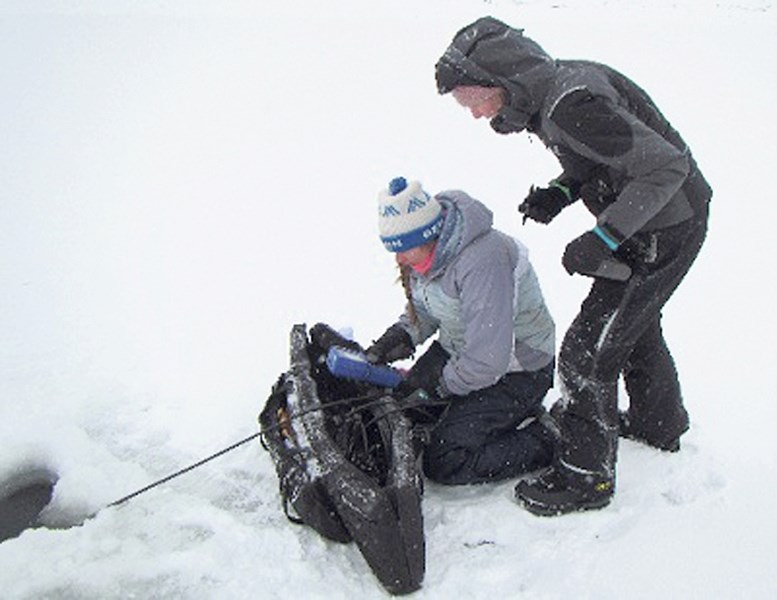Alberta Environment and Parks limnologist Jana Tondu will be presenting the results from her winter water survey during Science Outreach-Athabasca’s Nov. 19 presentation.
A limnologist studies the physical, chemical and biological makeup of land water — like streams, lakes and rivers. Within Alberta Environment, Tondu specifically monitors, evaluates water quality and assesses industry impact within the Upper Athabasca region, which includes quite a bit of the Athabasca River.
In January and February of this year Tondu and a group of others from within the department monitored a specific parcel of water from Jasper almost to Lake Athabasca.
“The idea behind it is to get an understanding about how water quality changes form the upstream all the way to the downstream,” she explained. “In the Athabasca River, directly, (there) are four pulp mills that discharge into the river and a variety of municipal water discharges. So, we wanted to see what the impact of the (wastewater) discharges to the water.”
The result?
“Overall, the water quality of the Athabasca River is pretty good,” she said.
That said, according to Tondu, it’s rather difficult to give a definite answer on the quality of the water. They measured hundreds of variables each time they took a sample and water, in itself, is “extremely complex.”
“There’s a lot of different ways that water can be influenced — from the ground, from the air, from tributaries and just from the natural weathering process,” she explained.
“So, we did find, in general, that there are definitely different spatial patterns of different parameters in the Athabasca River. There are noticeable impacts on water quality in some of the effluent (wastewater), but not in everything.”
They did try to make it easier, however, by doing the survey in the winter. Despite the rather frigid temperatures and the fact they had to auger through the ice in some places, it’s easier to see the pollution when there’s not as much water flowing in the river.
“When the river is flowing at its lowest conditions, there’s less available water for dilution or what we call assimilative capacity (the ability of a body of water to cleanse itself),” she said. “So, you’ll likely see larger influences from point discharges (like from effluent discharge), because the water quality is more vulnerable at low flow conditions.”
On the other hand, though, they couldn’t measure the “non-point sources of pollution,” like agriculture.
“Nothing was really happening on the landscape and the river was frozen over,” she said. “So, in the summertime, we can have activities like agriculture that we really weren’t capturing in the study.
“It was focused on point sources, because that’s what we regulate. So, the study can also be used to evaluate our current regulation system. Like, all we doing a good job at regulating?”
More in-depth results from the winter water survey will be presented on Nov. 19 in Athabasca University’s (AU) Governing Council Chambers from 7 p.m. to 8:30 p.m.



